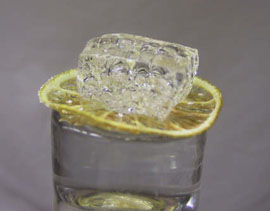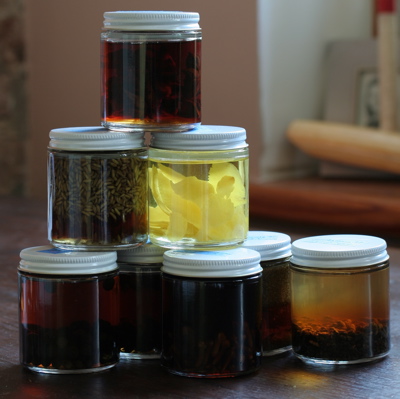Maraschino Liqueur and What The Hell Kind Of Career Is Bartending?
I’m of the firm opinion that few ingredients bridge the gap between passive-cocktail-drinker and cocktail-enthusiast better than maraschino liqueur. Maybe this is just my own experiences, but there’s something about the complex flavors involved that invariably take a mixed drink down a funky, flavorful, and potentially dangerous road. To me, a few too many drops can render an otherwise interesting cocktail undrinkable. But when used correctly, there are few ingredients that bring to the table such complexity and that throw instant kindling on the barroom social fire – oh my! What is this? Here, you try it!
Just like many other people, my introduction to maraschino liquor was with the Aviation. I guess I should be grateful to the bartender who made it so well, because that particular cocktail was something of a revelation in my life. I know – I know! – that’s stiflingly dramatic, but it’s true if only in the hazy hindsight that comes with too much bloody time around drinks.
I’d never tasted anything like it. Before, I had worked in a high-volume rock’n’roll bar, and probably was happy hanging out in its carbon copy down the block with happy nights of beer. Sometimes hard liquor would come into the picture, but never something I thirsted for, never something that interested me from a culinary point of view. From somewhere (I honestly have no idea to this day) I heard the name Aviation and thought it clever and intriguing, so when that badass Death and Co. opened around the corner, an Aviation was the first off-the-menu drink I had the courage to order.
(That’s right, kids, I’ve only been a geek about this stuff for a short, short while. Goes to show what a mix of OCD and far too much free time can do to a boy.)
So I ordered it from the bartender. We met that night. To this day, that bartender (who shall remain nameless ‘cause I’m not completely tacky) holds a special place in my heart. Never mind he’s a great guy and fantastically talented, but that Aviation lit up my eyes and stuck a bright and shiny light bulb directly over my head: Holy shit. This is amazing.
From there I began immersing myself into what had been a college bartending job that lingered far too long after graduation. Basically, I started regarding the profession of bartending (different than tending bar) as sophisticated and something I could really enjoy.
And thus was my first night with maraschino liqueur and the path it took me down. Sure, an Aviation is almost passé at this point, but it still works the same wonders on the uninitiated as it did for me. Plus, with the re-introduction of Crème de Violette, we here in New York are able to drink and make classic Aviations without going to a small number of cocktail lounges the nation over or spending too much money on frustrating mail order or flights to Europe. I hear the Bay Area is next.
Over the last year, I’ve been privileged enough to manage a bar where the owner allows me to do almost anything I want. Consequently, I now have three maraschino liquors at my nightly disposal. From my understanding, these three are the only current mass-production maraschinos. In fact, I personally don’t know of any others.
Luxardo Maraschino Liqueur Maraska Maraschino Liqueur
Stock Maraschino Liqueur
Just as a quick oversight, maraschino liqueur has traditionally been distilled from ripe marasca cherries, their crushed pits, sprigs and leaves, honey, and other “secret” ingredients.
Some historically interesting stuff for your next cocktail soirée: Dominican monks first made maraschino in the 16th Century. The original Luxardo distillery was built in a town called Zara – for a time part of the Austrian Empire, then after WWI annexed to Northern Italy, then almost completely destroyed by the bombardments of WWII, and finally settling just behind the Iron Curtain and changing its name pinko-style to Zadar. The distillery was rebuilt after the war by the only surviving Luxardo family member in the town of Torreglia in postwar Northern Italy. The original Zara distillery was rebuilt by the communists and marketed as Luxardo. After some legal battles, the distillery was eventually re-branded as Maraska.
And there we have it. The two most widely used maraschino liqueurs. And yes, information was pillaged almost exclusively from wikipedia.
In my opinion, Luxardo and Maraska are the only maraschinos worth using. The Stock maraschino, while having a maraschino-esque flavor and smell, doesn’t really shine through in a cocktail the way Luxardo and Maraska will. I think the common comparison goes something along the lines of: Stock is to Luxardo and Maraska as is Triple-Sec to Cointreau. There’s some wisdom there.
While I’ve gotten favorable results with both Luxardo and Maraska in a wide range of cocktails, I’ve taken to using one over the other in specific drinks. I’m still developing my use of both, but in general I’ve found the Luxardo to have a funkier presence. It’ll cut through other dominant flavors and make its presence known in a big way while not being the cocktail equivalent of a drunken elephant in a small room. This is especially important when mixing drinks with a long list of ingredients: more to compete and play with. As an example, the following is a cocktail I’ve had on The Back Room’s menu for some time:
The Vostead 18
1 fresh strawberry, lightly muddled to break fruit apart.
2 oz Bombay Dry
0.5 oz Fresh Lemon Juice
0.5 oz St-Germain Elderflower
2 dashes Maraschino
Shaken, strained into a chilled cocktail glass. Topped with prosecco (~1.5 oz)
In trying both Luxardo and Maraska side-by-side in this particular cocktail, I’ve noticed that the Luxardo comes through much better. It’s such a small amount, but it makes the cocktail all the more interesting. The Maraska just doesn’t have the gusto in this case.
Now, in a cocktail that has only a few ingredients that in themselves are clean and simple (as in an Aviation, for example), I find myself reaching for the Maraska. Its subtler flavor allows the other ingredients to come through on the palate, wherein the Luxardo needs to be reined in so much or it’ll take over completely. Doing this with the Luxardo creates the taste-impression of maraschino liqueur, but pulls back from texture and an aroma presence in comparison to the other ingredients. The drink, to me, becomes unbalanced due to the compromise.
For my Last and Final Words, I switch it up depending on the customer and my initial impression of their taste. In some cases, I want the Green Chartreuse and the gin or rye (respectively) to come through more (Maraska). In other cases, the cocktail might benefit from pulling the Chartreuse back and asserting the maraschino (Luxardo).
As much as I’ve over-drank maraschino cocktails – and for a period cringed at the taste of ANYTHING with the stuff – I’ve come back to them. They’re always a crowd pleaser when made correctly, and almost always a gnarly mess when overdone. The sweetness of the liqueur can act as a pleasant balance against strong and sour ingredients wonderfully, but it must be done with the utmost precision. A free-pour of maraschino makes me cringe in the same way a Manhattan without bitters does.
At least that’s how I feel.








